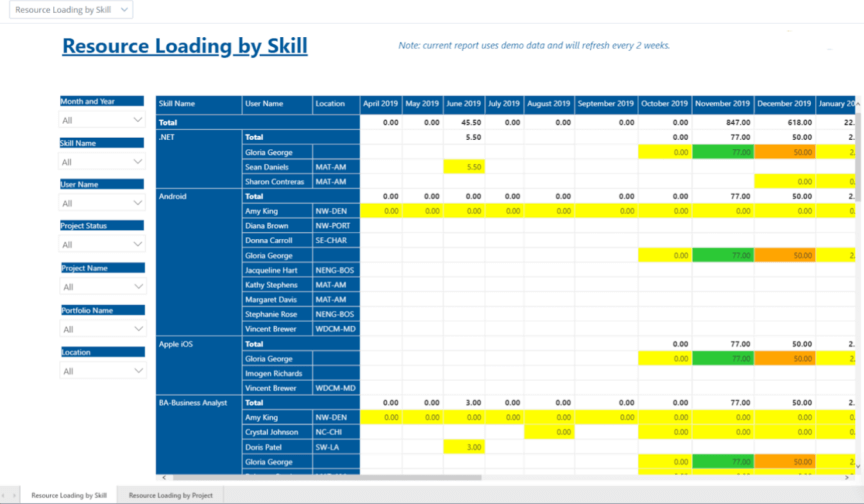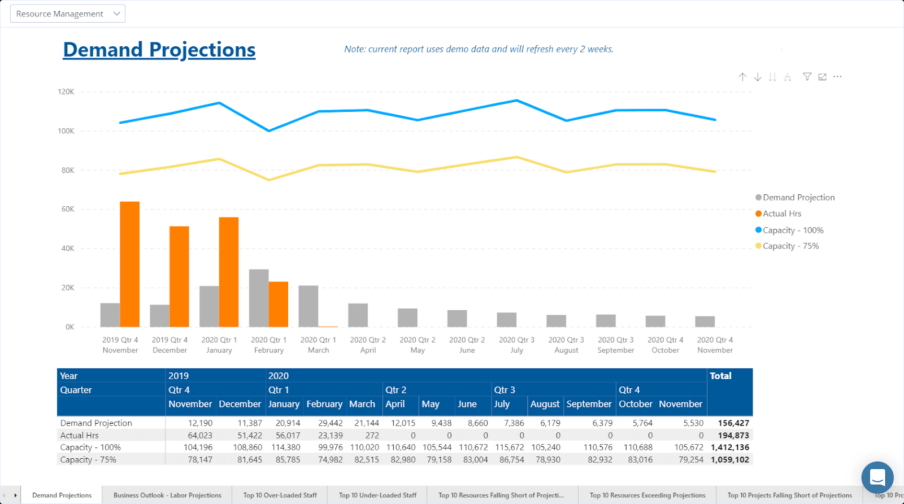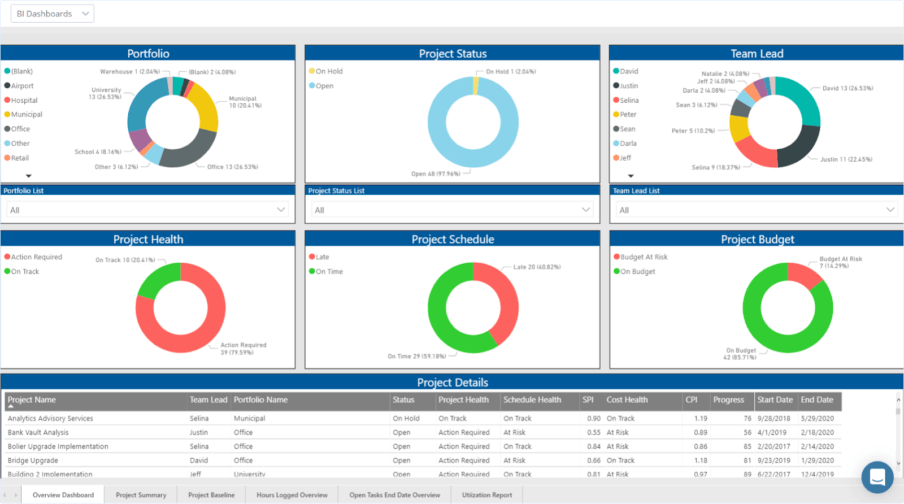The most valuable asset in running a successful professional services organization are your resources. Effective resource management is critical to utilize your resources to their full potential, so your team can deliver the best possible results.
Resource Management Defined
Not to be confused with human resource management, resource management in professional services organizations means organizing the necessary resources to complete tasks and projects efficiently, produce quality work and, most importantly, deliver projects on time and budget to your clients.
This article offers resource management best practices that are tried, tested, and true by our clients to help your professional services firm perform at an optimal level.
Resource Management Best Practices
1. Identify the top 10% of your overloaded and underloaded staff
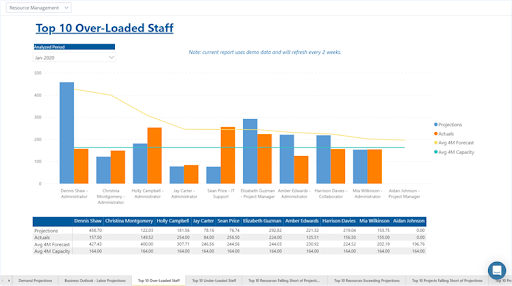
Having a team with too much work on their plate can either overwhelm or demotivate all those involved. Work burnout is real.
Determining which employees are overloaded allows management to reassign projects to other team members and keep a more balanced workload amongst the team.
Having too many underloaded employees is clearly also bad for your bottom line. Maintaining high resource loading utilization is critical for any professional services firm.
By focusing on only the top 10% of both overloaded and underloaded personnel will help you make the biggest impact in the shortest time frame, as opposed to trying to solve resource allocation for the entire company.
Once you identify and resolve resource over- and underloading, see if you can spot patterns. For example, you might notice that projects from specific clients typically lead to an overloaded team, or a certain manager tends to have low resource utilization with their projects. Having this insight can help you make better resource planning decisions in the future.
2. Pinpoint the resources and projects falling short of or exceeding projections
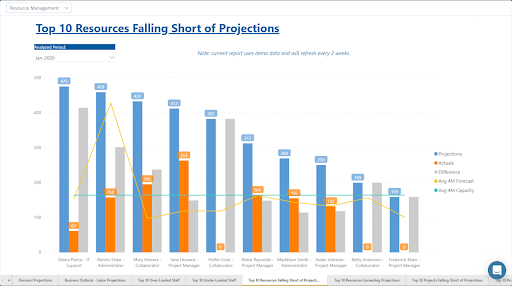
Most companies are already doing a good job of identifying projects where the actual time spent exceeded original estimates. It is also important to take the next step and find out the root cause of the discrepancy:
- Poor performance of the assigned resources;
- Overly optimistic planning by the project manager;
- Scope creep;
- A combination of the above factors.
A practice of identifying projects where the actual time spent was below projection is less common. However, it is equally important to analyze such situations. The following possible reasons will certainly require different corrective measures:
- Assigned resources are super-stars;
- A project manager tends to pad time too much;
- Project scope was reduced midway through;
- Something else has happened.
Identifying and understanding the reasons behind actual vs. planned variance will help your organization become more efficient and disciplined when it comes to the resource estimates.
3. Compare Capacity with Forecast

By comparing your resource capacity with the demand forecast on a regular basis you will be able to make better and more informed business decisions.
- Ramp up business development if the project demand is lower than capacity.
- Scale up hiring if you have more demand than you can handle with your current available resources.
- Set realistic deadlines for new projects by understanding true availability of your resources in the future.
4. Regularly review to catch resource conflicts
Project timelines are always changing, and so does the demand for resources and your team′s availability. You should make it a habit to regularly review resource allocations to ensure that projects are always staffed with the right amount of people with the right combination of skills. That way, you get the most up-to-date picture when a new project comes in and you have to assess your team capacity.
5. Compare your planned and actual resource utilization
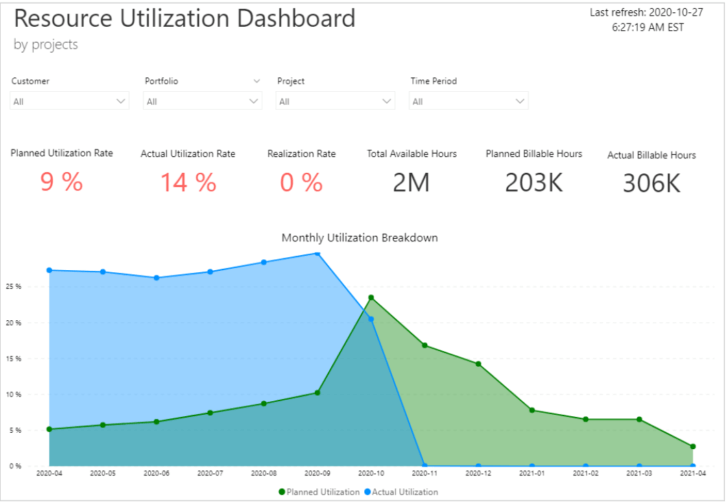
Utilization Rate, which shows the ratio between the reported billable hours to the total available hours, is one of the most important levers that affect a company’s profitability.
Not only is it critical to regularly monitor Actual Utilization rate for your ongoing projects, but it is equally important to compare it to the Planned Utilization rate. If your actual utilization was higher than planned – was it caused by poorly scheduled deadlines, which forced the team to work overtime? Was it at the expense of other projects?
If the actual utilization rate was below your plan – your profit margin goal might be at risk.
It is recommended that you track the Utilization Rate on both project, team and individual user levels to uncover hidden inefficiencies in your resource planning process.
Additional reading: Calculating and Managing Resource Utilization
6. Run Resource Loading Simulations
Don′t just rely on reports when planning resource allocations. Try running resource loading simulations for upcoming or potential projects as well. A simulation can warn you of potential resource conflicts or show you how your preliminary plan will impact existing project schedules.
For best results, try different scenarios/variations of allocated resources to see which combination of assignments would deliver the most optimal results.
7. Search for hidden patterns and insights
While it′s tempting to choose an easy path of only reviewing high-level data for your resource capacity, forecast, or actuals, a wiser option would be to regularly perform a more detailed analysis.
Segmenting your resourcing data using various criteria such as customer, portfolio, project, team, business unit, project manager, etc, might help uncover non-trivial insights or patterns. For example:
- How do your portfolios compare in terms of resource utilization?
- Do you have teams or people that consistently complete assignments faster than their colleagues?
- Is there any seasonality to resource overloading?
Knowing and acting on these insights will most definitely positively impact your bottom line.
Turn these Resource Management Best Practices into Reports
Easy Projects makes it easy to turn these best practices for resource management into action. Easy Projects Professional Services edition comes with a number of pre-built resource loading reports and dashboards. You will have key resource management data at your fingertips in a matter of minutes. To learn more about how Easy Projects can help you with your resource management needs – book a guided tour with our product specialist.
Follow us


